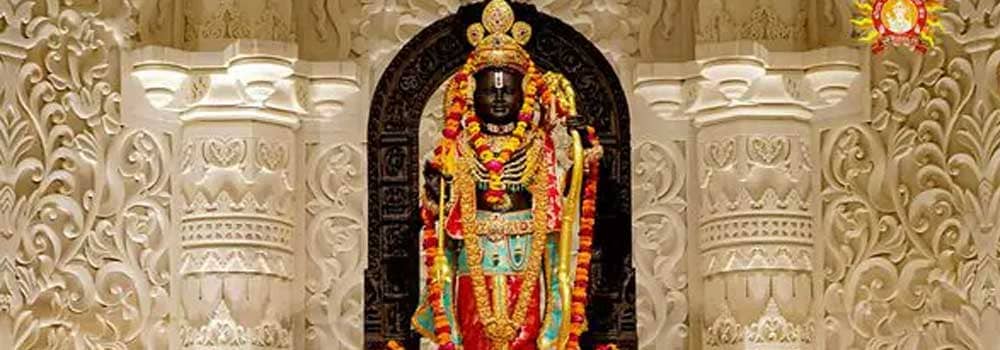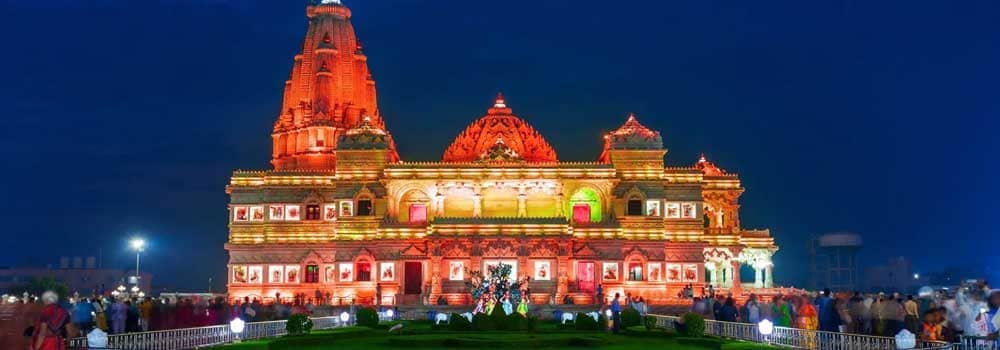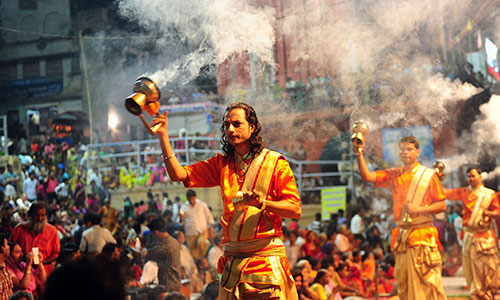Overview
Ayodhya is an ancient city in Uttar Pradesh that many Hindus respect. Many Hindus honor this place greatly, believing it is the birthplace of Lord Rama, the central hero of the Ramayana and a main figure in Hinduism. Millions of peregrines and tourists visit the city yearly to spot its holy sites and historical monuments. Besides its spiritual status, Ayodhya is celebrated for its traditions and culture, which have been guarded and valued for a long time.
The Sarayu River flowing beside it makes Ayodhya peaceful and special. The streets in Ayodhya lead you past many temples, ghats, and historic buildings that recall events from the past. The most outstanding religious festival here, Ram Navami, brings many devotees who enthusiastically praise Lord Rama. With time, Ayodhya has become an important pilgrimage place and proudly displays India's strong spiritual traditions. Besides religion, the city’s monuments and habits tell visitors about the diverse culture of India.
Quick Information About Ayodhya
|
State
|
Uttar Pradesh
|
|
Coordinates
|
26.7922° N, 82.1998° E
|
|
Geographical Area
|
2,522 sq. km.
|
|
Popular Tourist Attractions in Ayodhya
|
- Ramkot
- Ram Janmabhoomi
- Kanak Bhawan
- Hanuman Garhi
- Mani Parvat
- Nageshwarnath Temple
- Tulsi Smarak Bhawan
- Sarayu River
- Gulab Bari
- Bahu Begum ka Maqbara
|
| Popular Festivals |
- Ram Navami
- Maha Shivratri
- Diwali
|
| Languages Spoken |
- Hindi
- Awadhi
- Urdu
- English
|
+ Read More
Ayodhya History
Ayodhya’s story combines legends, spirituality, and events from thousands of years. According to Hindu tradition and the ancient Ramayana, Lord Rama, who became one of Vishnu’s seven avatars, was born here. Kosala Kingdom, which had long influenced northern India, made the city its capital. Ayodhya’s role in history: early sources say King Dasharatha, the father of Lord Rama, ruled the city.
The fortunes of dynasties and rulers have gone in Ayodhya over the centuries. The city was at the heart of both the Maurya and Gupta empires, thanks to its fine buildings, educational institutions, and many religious activities. Many traders and pilgrims were drawn to Ayodhya because of its position beside the Sarayu River. Many temples dedicated to Lord Rama and other deities in Hinduism kept the city’s religious past thriving.
During numerous Islamic invasions and rule, Ayodhya was a contested area. The Babri Masjid, built by Mir Baqi for the Mughals in the 16th century, became a conflict between religious and political groups in recent years. For many years, battles in court and strained relationships in the community ended with the mosque being torn down in 1992 and the temple under construction today.
Ayodhya is a place today where history and religious faith go hand in hand. Evidence of early settlements excavated in the country confirms its significance to history and religion. The city is committed to its past and embracing the changes that will come in the future.
Attractions:
Ayodhya is filled with many amazing spots to visit and appreciate. Old temples, the ghats along the river, and distinctive buildings give the city an energetic atmosphere. These are the top attractions you should make sure to visit:
- Ram Janmabhoomi: Many believe that Lord Rama was born on this site. Many people find their way there to pray.
- Hanuman Garhi: A lovely temple built for Lord Hanuman at the top of a hill. You can get great views of the city from it.
- Sarayu River Ghats: The riverbanks are calm, making them great for early walks or boat trips.
- Kanak Bhawan: People come here for the fine architecture and statues of Rama and Sita.
- The famous temple Treta Ke Thakur is where Rama is recognized in his royal identity.
- Nageshwarnath Temple: An old Shiva temple that has great religious value.
Visitors can also visit local markets, try different foods, and attend festivals. People in the city joyfully celebrate Ram Navami each year. Above all, the warm hospitality of locals adds to the charm.
Registration and Passes:
Those who plan to visit the Ayodhya temple complex must register in advance to enjoy a hassle-free visit. Visitors can register at the official Ayodhya tourism website or counters close to the temple. Pilgrims must enter their name and date of birth and choose the day and time they want to visit. This system measures the number of people in the area and ensures the area is respected.
Official passes are produced digitally or in token format, and it is necessary to have one to get inside the temple. Most services are free, but you may have to pay a little for darshan or VIP passes. People entering the stadium are required to show their valid ID and pass. Booking tickets before the festival season will save you the trouble of a long line. Registration gives devotees a smooth spiritual experience and improves security.

















